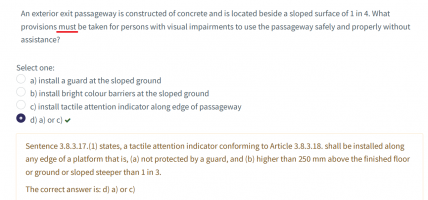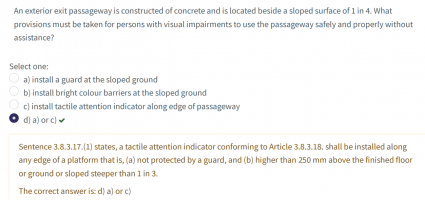This is a quiz question about Ontario Building Code:
---------------------------------------------------------------------------------------------------------

------------------------------------------------------------------------------------------------------------
It looks to me that a tactile attention indicator shall be installed only when both condition (a) and (b) are satisficed. If a platform (the exit passageway) is not higher than 250 mm above the finished floor, even there is no guards installed, tactile attention indicator is still not required.
So, my opinion is that the word "must" in the question should be "may", please comment.
---------------------------------------------------------------------------------------------------------

------------------------------------------------------------------------------------------------------------
It looks to me that a tactile attention indicator shall be installed only when both condition (a) and (b) are satisficed. If a platform (the exit passageway) is not higher than 250 mm above the finished floor, even there is no guards installed, tactile attention indicator is still not required.
So, my opinion is that the word "must" in the question should be "may", please comment.

